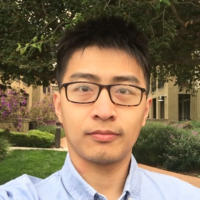Nitrogen-enriched, Highly Pressurized Nebular Clouds Surrounding a Super Star Cluster at Cosmic Noon
Nitrogen-enriched, Highly Pressurized Nebular Clouds Surrounding a Super Star Cluster at Cosmic Noon
View
Abstract
Strong lensing offers a precious opportunity for studying the formation and early evolution of super star clusters that are rare in our cosmic backyard. The Sunburst Arc, a lensed Cosmic Noon galaxy, hosts a young super star cluster with escaping Lyman continuum radiation. Analyzing archival HST images and emission line data from VLT/MUSE and X-shooter, we construct a physical model for the cluster and its surrounding photoionized nebula. We confirm that the cluster is ![]() Myr old, is extremely massive
Myr old, is extremely massive ![]() and yet has a central component as compact as several parsecs, and we find a gas-phase metallicity
and yet has a central component as compact as several parsecs, and we find a gas-phase metallicity ![]() . The cluster is surrounded by
. The cluster is surrounded by ![]() of dense clouds that have been pressurized to
of dense clouds that have been pressurized to ![]() by perhaps stellar radiation at within ten parsecs. These should have large neutral columns
by perhaps stellar radiation at within ten parsecs. These should have large neutral columns ![]() to survive rapid ejection by radiation pressure. The clouds are likely dusty as they show gas-phase depletion of silicon, and may be conducive to secondary star formation if
to survive rapid ejection by radiation pressure. The clouds are likely dusty as they show gas-phase depletion of silicon, and may be conducive to secondary star formation if ![]() or if they sink further toward the cluster center. Detecting strong
or if they sink further toward the cluster center. Detecting strong ![]() 1750,1752, we infer heavy nitrogen enrichment
1750,1752, we infer heavy nitrogen enrichment ![]() . This requires efficiently retaining
. This requires efficiently retaining ![]() of nitrogen in the high-pressure clouds from massive stars heavier than
of nitrogen in the high-pressure clouds from massive stars heavier than ![]() up to 4 Myr. We suggest a physical origin of the high-pressure clouds from partial or complete condensation of slow massive star ejecta, which may have important implication for the puzzle of multiple stellar populations in globular clusters.
up to 4 Myr. We suggest a physical origin of the high-pressure clouds from partial or complete condensation of slow massive star ejecta, which may have important implication for the puzzle of multiple stellar populations in globular clusters.




